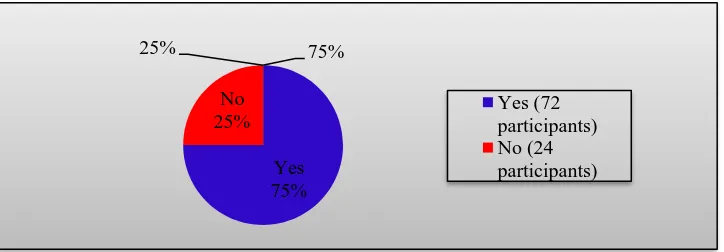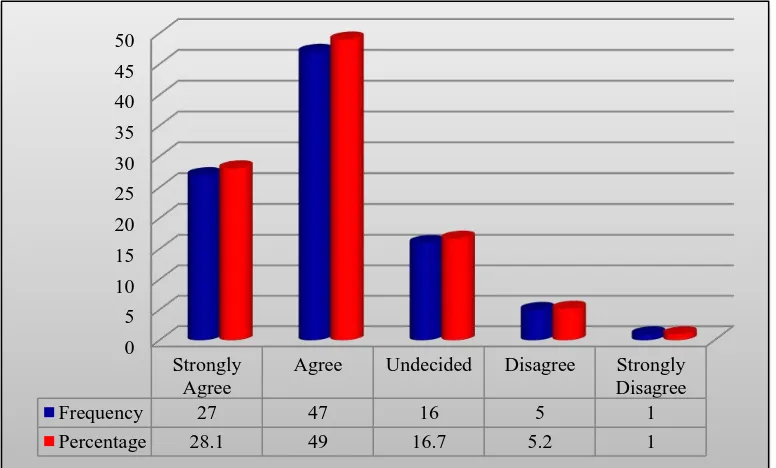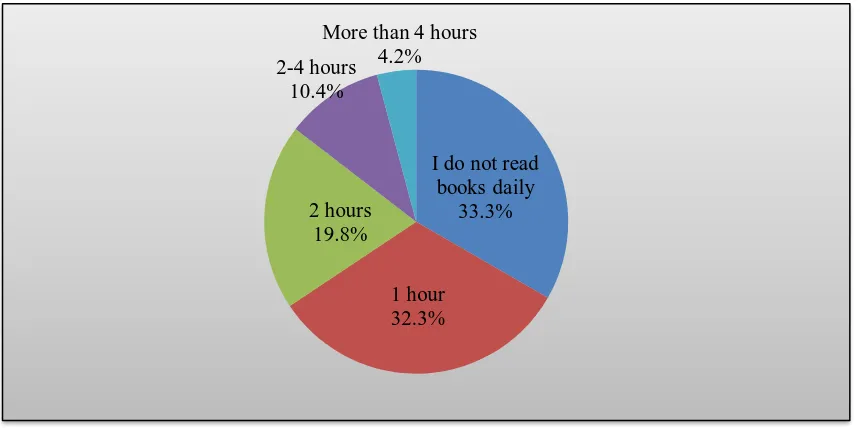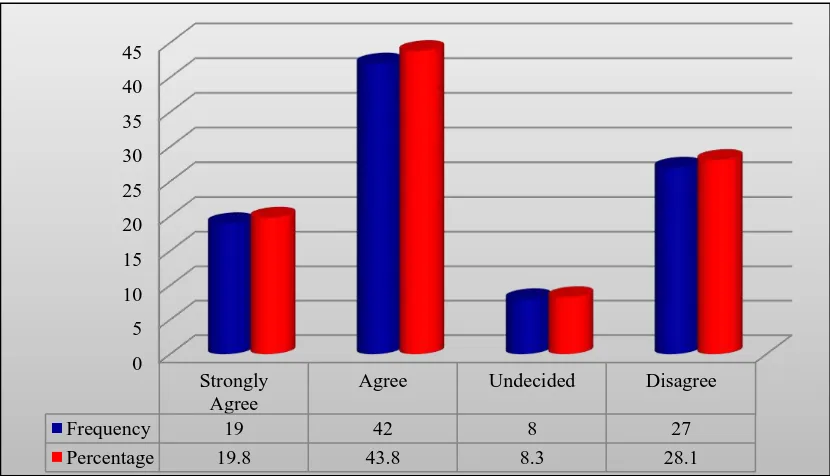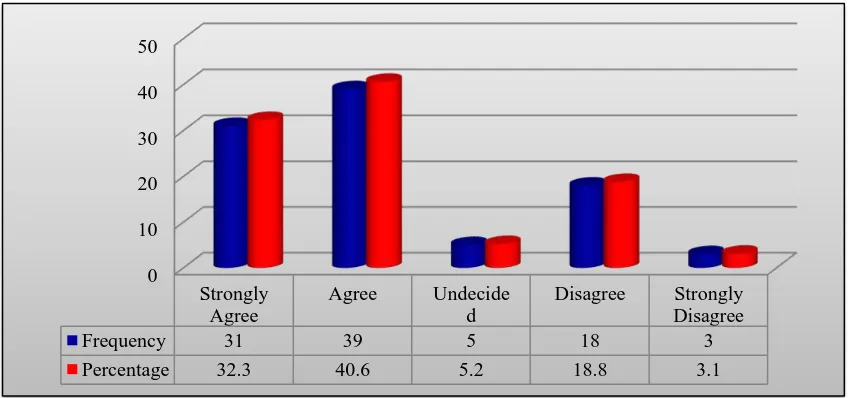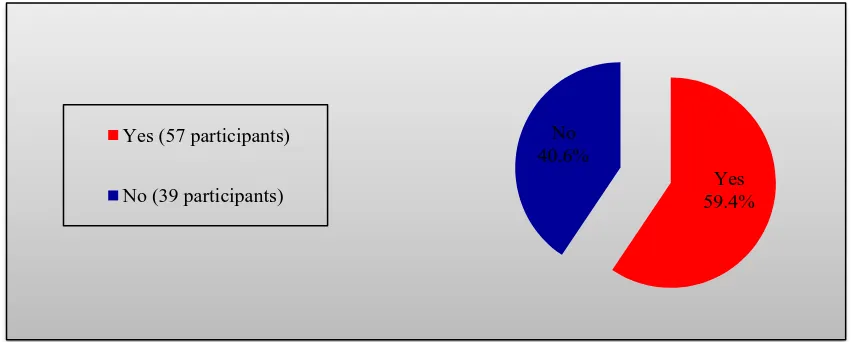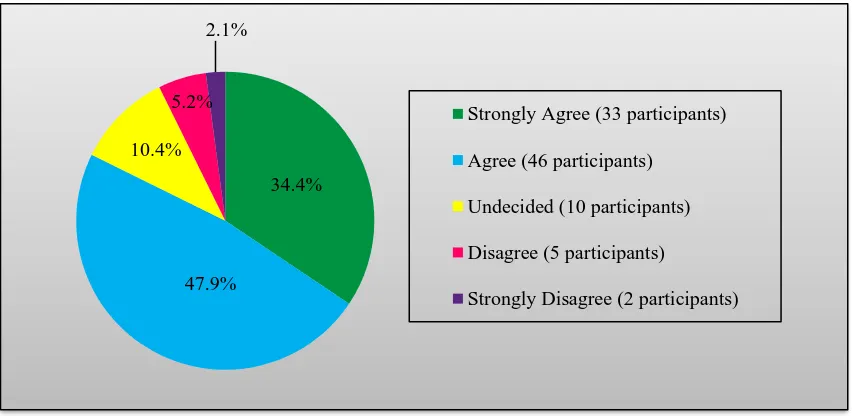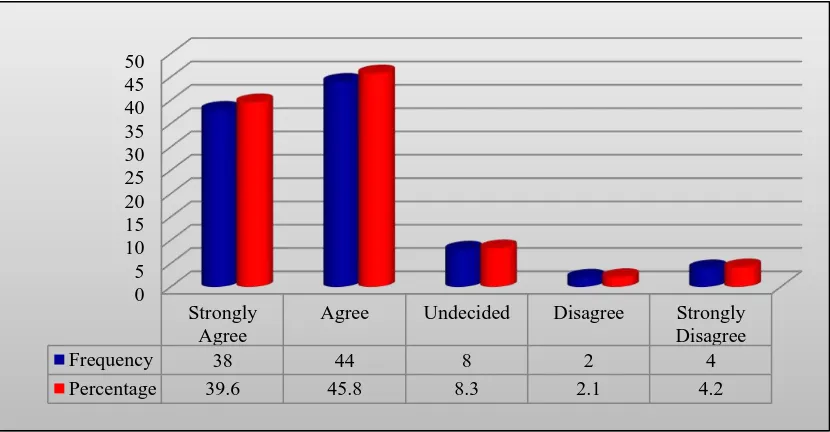The Impact of Internet and Social Media on
the Habit of Reading Books: A Case Study in
the Southern Region of Bangladesh
P-ISSN 2355-2794 E-ISSN 2461-0275
Md. Obaidullah1
Molla Azizur Rahman2
1Northern University of Business and Technology Khulna, Khulna, BANGLADESH 2 Khulna University, Khulna, BANGLADESH
Abstract
This study tries to find out the influence of Internet and social media on students’ habit of reading printed books. The entire study is conducted among a sample of 96 students of two different institutions of Khulna, a southern district of Bangladesh. Primary data a re collected through a questionnaire survey where the number of variables is 16. The study tries to explore tha t students are less interested in reading books and are prone to gather information through passive sources like movies, television, the Internet, etc. The result shows that students spend more hours on electronic media than on reading books. They take more pleasure in technology or social media than reading books. So, this study tries to bring the present vulnerable condition of reading habit into light.
Keywords: Technology, social media, young generation, reading habit.
1. INTRODUCTION
A piece of book is nothing but a lifeless object but it is obvious that a book can revive a mind. Reading books is the process that enriches one’s mind with different branches of knowledge until one dies. It creates new insight and new wisdom. Reading is one of the oldest habits of human civilization and is regarded as the passion of the greatest personalities of all times. To enrich knowledge, the most important task for everyone is to develop the habit and the culture of reading. One of the first documentary sources for reading was manuscript; however, it was accessible only to the elite class of society. Later, the arrival of the Gutenberg printing press ended such discrimination by making the printed word available to all. But, it is a matter of great regret that reading habits are changing due to technological development over time. In this modern multimedia society, radio, television, cell-phone, computer and the Internet are
Corresponding author, email: mazizurrahman@eng.ku.ac.bd, mazizurrahmanku@gmail.com
consuming a big slice of time and reducing the amount of time spent on reading printed books. Huang et al. (2014, p. 438) state that, “the amount of reading is declining significantly and reading skills are decreasing”.
Nowadays, children, youths and adults alike are inclined to use technology for information, entertainment and pleasure. The emergence of Internet has created an extraordinary change in the reading culture. It has made its existence, fully or partially, in the reading behaviour of the people. Presently, because of the Internet revolution, reading sources have been transformed diversely into web sites, web pages, books, e-journals, e-papers, e-mails, chat rooms, instant messaging blogs and other multimedia documents. Nowadays, Internet surfing enables people to navigate a world full of interconnected information, to discover new sites, to get up-to-date information and to download things of interest. Consequently, modern people have accepted Internet browsing as their daily habit and surfing the Internet has become a kind of addiction to the new generation. On the contrary, it is still believed that reading books, not browsing the Internet, is the best way through which one can travel upon the realm of knowledge and pleasure.
The present generation, especially the college and university students, are well acquainted with the new technology and its applications in the present virtually networked society. To them, reading books for knowledge and enjoyment is a backdated idea. Roberts and Foehr (2004) observe that the Internet has fixed dead roots in the lives of the net generation students than all other technological innovations. But, according to Holte (1998, p. 80), reading “adds quality to life and provides access to
culture and cultural heritage”. He pointed out that reading empowers and emancipates citizens and brings people together. Unfortunately, the habit of reading is declining day by day. The world is becoming smaller because of technological advancement and, at the same time, the hearts of people are also shrinking. As a result, many people, especially the young generation, overlook the fact that reading books is the best way to get information and pleasure. Thus, information and communication technology, especially the Internet, exert adverse effect on reading culture. This study shows that the widespread use of technology imprints damage on mind of present people that cannot be healed and that leads the young generation to a bleak future.
1.1 Research Hypothesis
To carry out this study the following hypothesis was postulated:
• Students are spending more time on using the Internet and social media than reading printed books.
1.2 Justification and Significance of the Topic
now-a-days we have broken up our relationship with our best and unique companion — book.
2. LITERATURE REVIEW
Reading, one of the four basic language skills, is a powerful and indispensable way of learning. It is considered one of the most important skills in academic and professional success and also plays a crucial role in second or foreign language education (Carrell, 1989; Grabe, 1991). Therefore, it is important that students develop good reading habit for a life-long learning experience. Reading is important because it stimulates one’s mind with enriched thinking power. According to Mishra (2008, para. 5), “A decade ago if someone said that he or she had not read a Tagore or a Tolstoy that
person was looked down upon by others”. But now it is worth noting that modern technological equipment and social networking systems have substituted one’s reading habit with their charming exposures. It is visible that many people have reduced their contacts with the world of books and other reading materials. Besides, every new medium of information and communication technology (ICT) has been a threat to man’s interest in reading.Johnsson-Smaragdi and Jönsson (2006) claim:
…both visual and ICT media are often presented as a threat to books and reading of literature. They are accused of taking time and interest away from children and adolescents’ book reading in leisure time by offering them more approachable alternatives. (Johnsson-Smaragdi & Jönsson, 2006, p. 520)
Loan (2012) reports that reading habits among people are on offshoots of technological advancements. Growing use of television, social media and Internet facilities results in the decline of the book reading habit. For social media, it is defined as Internet based applications that allow the creation and exchange of content which is user generated (Kaplan & Haenlein, 2010). Mastrodicasa and Metellus (2013) define social networking sites as the websites that allow users to connect to one another based on shared interests, activities, or characteristics. Thus, Facebook, YouTube, blogs, Twitter, MySpace, or LinkedIn are some of the most frequently visited social networking websites by the young generation now-a-days. Facebook is the most popular social networking site as of 2012, with 90% of college students using it (Junco, 2012).
Pivec (1998) investigated teenagers about their surfing habit and reported that the main rivals for attracting interest of teenagers towards reading books are TV and the Internet. Hastings and Henry (2006) reported that 85% of children prefer watching television to reading. Obama (2008, June 23-29) in his speech pinpointed that children cannot achieve unless they raise their expectations and turn off television sets. In this modern age students are rarely interested in reading for pleasure and enjoyment. Majority of the college or university students use the Internet at first step for the completion of their educational task. Bowman (2002), that is why, reports that students turn to the Internet first when faced with a question or an assignment for class.
read e-books neglecting printed books, but there are vital differences between these two methods. Birkerts (1994) observes that the order of the print is linear and the print material is static whereas the Internet surfing is non-linear and interactive and reader is free to read in any direction. He also believes that the younger generation growing up in the digital environment lacks the ability to read deeply and to sustain a prolonged engagement in reading. He further observes that the digital environment tends to encourage people to explore many topics extensively, but at a more superficial level. It is a fact that screen reading is more discontinuous and tiresome than printed book (p-book) reading. Johnsson-Smaragdi and Jönsson (2006, p. 521) similarly opine that “books are considered to demand more of the reader than the screen media do of the viewer in that texts focus on concepts while the latter focus on pictures”.
Schmar-Dobler (2003) observes that Internet content has blinking graphics, vivid colour, and lots of eye catching phrases that can guide or distract from reading. Chartier (2004) believes that reading in front of the computer screen is generally a discontinuous reading process and is done without the identity or coherence of the entire text from which the fragment is extracted. Cushman (1986) finds that visual fatigue is significantly higher while reading texts on a screen than on paper. He also believes that e-book technology has a long way to go before it can equal the readability and richness of p-books. Actually, when we read a printed book, we can feel deeply whatever we are going through because books are a tactile experience. An e-book reduces books to merely words. But a printed book is far more than words — it is an experience and object. Books can be touched, they can be held, and they can be smelled. Thus, no other technological equipment can give the flavour of reading p-books.
3. METHOD
This study used a survey method to collect primary data using a questionnaire as the data collection tool. The questionnaire was designed using the researchers’ personal experience. A pilot study was conducted on the questionnaire to ensure the reliability and validity of the survey. Considering the feedback elicited from 10 students, some changes were made in the questionnaire.
3.1 Participants
In this study, the participants are students from Govt. M. M. City College, Khulna and Northern University of Business and Technology Khulna (NUBTK). To collect data, a total of 100 students from both institutions were randomly chosen as sample of this study and they were given the questionnaire, but among them 96 questionnaires were usable. Both male and female students participated and the age of the participants varied between 16 and 24.
4. RESULTS
The analysis graphs the responses of the participants to the questionnaire and demonstrates the results sequentially.
Figure 1. Question (Q)1 - How do you spend your leisure period?
Figure 1 shows that 60 participants (62.5%) among 96 students spend their leisure by talking over cell-phones, chatting on Facebook or by using other technological instruments. On the other hand, only 36 (37.5%) participants read novels with other sources to pass their leisure.
Figure 2. Q.2 - Do you enjoy listening to music every day for entertainment?
From Figure 2, it comes to light that among 96 participants, 72 (75.0%) listen to music everyday where only 24 (25.0%) do not enjoy that.
Figure 3. Q.3 - Do you enjoy chatting with friends or talking over cell-phone in a
regular manner?
0 20 40 60 80 100
Percentage
More than 1 excluding reading novels or other literary works
More than 1 including reading novels or other literary works
Yes 75% No 25%
25% 75%
Yes (72 participants) No (24 participants)
Yes 69.8% No
30.2%
30.2% 69.8%
Yes (67 participants)
According to Figure 3, 67 (69.8%) participants enjoy chatting with friends and sometimes they talk over cell-phone when they get free hours and the remaining 29 participants (30.2%) are not interested in these practices.
Figure 4. Q.4 - Do you read non-academic books in a regular manner?
The findings presented in Figure 4 reveal that a very few number of the participants (20.8%) are used to reading non-academic books in a regular manner where the large portion of the participants (79.2%) reveal that they do not read non-academic books in a regular manner.
Figure 5. Q.5 - Watching movie provides more enjoyment in a quick manner than
reading books.
Figure 5 shows a very disappointing result regarding the habits of reading books. It illustrates that more than three quarter (77.1%) of the participants strongly agree or simply agree that watching movie provides more enjoyment in a quick manner than reading books to them where 16.7% (16 participants) are not sure about this idea and only a few (6.2%) among the whole discard this view.
Yes 20.8%
No 79.2%
79.2% 20.8%
Yes (20 participants)
No (76 participants)
0 5 10 15 20 25 30 35 40 45 50
Strongly Agree
Agree Undecided Disagree Strongly Disagree
Frequency 27 47 16 5 1
Figure 6. Q.6 - How much time do you spend on reading books daily?
The findings of Figure 6 confirm that one third of the participants do not have book reading habits daily where almost another one third (32.3%) have book reading habits but for only one hour every day, and the remaining one third include participants who like to read books every day for 2 hours (19.8%), for 2-4 hours (10.4%) and for more than 4 hours (4.2%).
Figure 7. Q.7 - How often do you browse the Internet?
In response to Question 7, the result in Figure 7 reflects that more than three quarter (80.2%) of the participants browse the Internet daily where 12 participants (12.5%) do so twice or thrice a week and only 7 of the participants (7.3%) do not use the Internet.
I do not read books daily
33.3%
1 hour 32.3% 2 hours
19.8% 2-4 hours
10.4%
More than 4 hours 4.2%
80.2% 12.5%
7.3%
Daily (77 participants)
Twice or thrice in a week (12 participants)
Figure 8. Q.8 - We spend more money for Internet accessibility than buying books.
Figure 8 demonstrates that 67 (69.8%) participants admit that they spend more money for Internet accessibility than buying books. Among the remaining 29 students, 12 are not sure of this issue and 17 go opposite to this statement.
Figure 9. Q.9 - We like to spend more time watching television than reading books.
Figure 9 illustrates that 61 (63.5%) participants like to spend more time watching TV where 8 (8.3%) participants are not certain about it, and 27 (28.1%) disagree on this statement.
0 10 20 30 40 50
Strongly Agree
Agree Undecided Disagree
Frequency 42 25 12 17
Percentage 43.8 26 12.5 17.7
0 5 10 15 20 25 30 35 40 45
Strongly Agree
Agree Undecided Disagree
Frequency 19 42 8 27
Figure 10. Q.10 - How often do you collect non-academic books from your
college/university library?
The findings in Figure 10 are very frustrating as it manifests only 27 (28.1%) of the total participants collect non-academic books from their institutional library, included that 12 (12.5%) of them do so once a week and the remaining 15 (15.6%) do the same once a month. 18 students (15.6%) collect books twice or more a year, but it is a matter of wonder that more than half (53.1%) of them normally do not have the habit of going to college/university library with a view to collecting books.
Figure 11. Q.11 - I take more pleasure in technology/social media than reading books.
Figure 11 reveals that 70 students, (72.9%) of the total number, take more pleasure in technology or social media than in reading books where 5 students (5.2%) are confused if they take more pleasure in technology or not. On the contrary, 21 students (21.9%) state that they do not think so.
12.5%
15.6%
18.8% 53.1%
Once in a week (12 participants)
Monthly (15 participants)
Twice or more in a year (18 participants)
Usually I do not go there (51 participants)
0 10 20 30 40 50
Strongly Agree
Agree Undecide d
Disagree Strongly Disagree
Frequency 31 39 5 18 3
Figure 12. Q.12 - Nowadays, buying books is all about the decoration of our modern,
fashionable drawing room.
From Figure 12, it is clear that 69.8% participants are in favour of the statement that they believe, these days, buying books is all about the decoration of modern, fashionable drawing room. 11.5% of the participants are undecided and the remaining 18.8% participants say that they do not consider books as show-pieces for house decoration.
Figure 13. Q.13 - do you think, ‘book reading is the best way to acquire knowledge’ is
a backdated idea?
The finding shown in Figure 13 is quite astonishing that 59.4% students opine that book reading for acquiring knowledge is a backdated idea where 40.6% believe that this statement is not true.
21.9%
47.9% 11.5%
16.7% 2.1%
Strongly Agree (21 participants)
Agree (46 participants)
Undecided (11 participants)
Disagree (16 participants)
Strongly Disagree (2 participants)
Yes 59.4% No
40.6% Yes (57 participants)
Figure 14. Q.14 - New technology provides more information, entertainment and
pleasure than printed books.
In Figure 14, it is apparent that a significant portion of participants (82.3%) hold the opinion that new technology provides more information, entertainment and pleasure than printed books, where 10 participants (10.4%) cannot decide whether the statement is right or not, and a very small portion of the students (7.3%) demonstrates a contrary view.
Figure 15. Q.15 - Which one helps you more to be acquainted with worldwide culture?
Figure 15 shows us how technology grabbed us and replaced our book reading habit or passion. It manifests that 79 participants (82.3%) think that people become acquainted with worldwide culture through browsing the Internet, where only 17.7% take help from book reading in order to do so.
34.4%
47.9% 10.4%
5.2% 2.1%
Strongly Agree (33 participants)
Agree (46 participants)
Undecided (10 participants)
Disagree (5 participants)
Strongly Disagree (2 participants)
82.3% 17.7%
Browsing Internet (79 participants)
Figure 16. Q.16 - Use of technology in a wide range reduces our time to read printed
books.
The findings in Figure 16 illustrate that 82 students (85.4%) admit that the use of technology in a wide range reduces their time to read books, where 8.3% of the total students are confused whether it is right or not. On the other hand, only 6 participants (6.3%) refute this statement.
5. DISCUSSION
The findings of this study show that a maximum number of students take more pleasure in social media than reading books. It is astonishing that when more than three quarters of the participants browse the Internet daily, only very few of them read academic books in their daily free time. A majority of the students do not read non-academic books during their leisure. Most of the participants browse the Internet, pass time on social-media (e.g. Facebook), talk over cell-phone, listen to music or play games regularly during their free time. It is clear that modern people think that they enjoy reading but they take other options and substitute book reading. To them, watching movie provides more enjoyment in a quick manner than reading books. They are very spontaneous to share that they are very fond of using technological instruments.
Another finding of the study shows that, because of the growing influence of the Internet and social media, it becomes difficult to find people who have regular habit of reading. The findings also reveal that students buy books every year but few of them pass time with books and it is the reason for which almost 70% (or exactly 69.8%) students agree with the statement that “Nowadays, buying books is all about for the decoration of our modern fashionable drawing room.” The days are moving forward, and book reading habit fails to maintain the rhythm in a similar speed. The modern people are substituting their library with digital resources. This very finding correlates with the statement of Yong (2009, pp. 72-73) that “modern means of dissemination of
entertainment and information such as TV, computers, VCDs, game machines and the Internet are fully occupying young people’s living and studying space”.
Since today’s modern individuals use the Internet daily, they spend more money for the accessibility of Internet than buying books, because, to them, the Internet is the best way through which one can travel to many parts of the world. When the reasons were asked orally, most of the participants replied that by browsing the Internet one could learn and observe different cultures of different countries. Again, to them, with the broadcasting of satellite channels, it becomes possible and easy to observe other peoples’ language, food habit, culture, and so on. And, it is the reason for which a majority of the students like to spend more hours on watching TV, and admit that browsing the Internet and surfing social media help them more to become acquainted with worldwide culture. That is why, the findings presented in Figure 10 expose that the most frequently used answer is that they usually do not go to their college or university library in order to collect books.
Lastly, it comes to light that, in spite of their technological addiction, a majority of the participants (85.4%) state that the use of technology in a wide range reduces their time to read printed books. So, the findings of the study clearly show that students’ gradual addiction to technology and its different time killing forms exert an alarming effect on their book reading habits.
6. CONCLUSION
In this fast-changing world, the lack of reading culture among the young generation, especially higher secondary and tertiary level students, nowadays is greatly affecting the quality of graduates produced by the nation’s highest institutions. From this study, it becomes apparent that gradual technological advancement creates unavoidable barriers in the path of intellectual development. Modern people are forgetting/ignoring the fact that book reading is the best way by which one’s intellectuality can develop. It is true that technology helps a lot to make our daily activities easy; but if technology completely substitutes students’ reading habit, one can never be a knowledgeable person as one loses the chance of being an extensive reader.
Consequently, the findings of the study indicate that the growing dependence on technology and its surrogates is the reason why students are less interested in reading books. It is also found that most of the participants enjoy chatting with friends, playing games, watching TV, talking over cell-phones or browsing the Internet, while very few of them read printed books. Even those who read books reveal that book reading is only a way to pass examinations. They depend largely on technology for information, pleasure, and entertainment than books, and that is the reason for which students these days are not willing to go to the library. This study concludes welcoming new researches to be conducted on a large scale and to give new insight into this field of investigation.
REFERENCES
Bowman, V. (2002). Reading between the lines: An evaluation of windows eyes screen reader as a reference tool for teaching and learning. Library Hi Tech, 20(2), 162-168.
Carrell, P. L. (1989). Metacognitive awareness and second language reading. The Modern Language Journal, 73(2), 121-134.
Chartier, R. (2004). Languages, books, and reading from the printed word to the digital text. (T. L. Fagan, Trans.). Critica l Inquiry, 31(1), 133-152.
Cushman, W. H. (1986). Reading from microfiche, a VDT, and the printed page: Subjective fatigue and performance. Human Fa ctors, 28(1), 63-73.
Grabe, W. (1991). Current developments in second language reading research. TESOL Quarterly, 25(3), 375-406.
Hastings, C., & Henry, J. (2006). Reading is a closed book to today’s children.
Retrieved from http://www.telegraph.co.uk/news/1524595/Reading-is-a-closed-book-to-todays-children.html
Holte, M. S.-t. (1998). Creating an optimum reading culture in the low countries: The role of Stichting Lezen. Paper presented at the 64th IFLA General Conference,
Amsterdam, Netherlands, August 16-21. Retrieved from
https://archive.ifla.org/IV/ifla64/098-80e.htm
Huang, S., Capps, M., Blacklock, J., & Garza, M. (2014). Reading habits of college students in the United States. Reading Psychology, 35(5), 437-467.
Johnsson-Smaragdi, U., & Jönsson, A. (2006). Book reading in leisure time: Long‐term
changes in young peoples’ book reading habits. Scandinavian Journal of
Educationa l Research, 50(5), 519-540.
Junco, R. (2012). The relationship between frequency of Facebook use, participation in Facebook activities, and student engagement. Computers & Educa tion, 58(1), 162-171.
Kaplan, A. M., & Haenlein, M. (2010). Users of the world, unite! The challenges and opportunities of social media. Business Horizons, 53(1), 59-68.
Loan, F. A. (2012). Impact of the Internet surfing on reading practices and choices.
Webology, 9(1). Retrieved from http://www.webology.org/2012/v9n1/a94.html Mastrodicasa, J., & Metellus, P. (2013). The impact of social media on college students.
Journal of College & Character, 14(1), 21-30.
Mishra, B. K. (2008). Book reading habit on decline among youths. Retrieved from http://timesofindia.indiatimes.com/city/patna/Book-reading-habit-on-decline-among-youths/articleshow/3588219.cms?from=mdr
Obama, B. (2008, June 23-29). Barak Obama on libraries: Bound to the new world. Key note address at the opening general session at the ALA Annual conference in Chicago. Retrieved from http://boulderlibrary.wordpress.com/2008/11/10/bound-to-the-word-by-barack-obama-courtesy-of-american-library-association/
Pivec, F. (1998). Surfing through the Internet: The new content of teenagers’ spare time. ASLIB Proceedings, 50(4), 88-92.
Ramirez, E. (2003). The impact of the Internet on the reading practices of a university community: The case of UNAM. Paper presented at the World Library and Information Congress: 69th IFLA General Conference and Council. Berlin. Retrieved from: http://archive.ifla.org/IV/ifla69/papers/019e-Ramirez.pdf
Schmar-Dobler, E. (2003). Reading on the Internet: The link between literacy and technology. Journal of Adolescent and Adult Literacy, 47(1), 80-85.
Yong, Z. (2009). Literary reading in the context of media culture. Socia l Sciences in China, 30(2), 68-84.
[Received 20 November 2017; revised 29 January 2018; accepted 23 February 2018]
THE AUTHORS
Md. Obaidullah did his BA (honours) in English Language and Literature and MA in
English (Literature) in 2013 and 2014 respectively. Later on, he received another MA degree in English Language in 2015. His research interests include Sociolinguistics, Corpus Linguistics, Second Language Acquisition (SLA), World Englishes, Discourse Analysis, Language Pedagogy and Post-Colonial Study. He has published several articles of his interests in peer-reviewed journals locally and abroad. At present, he is teaching as a Lecturer in the Department of English at Northern University of Business and Technology Khulna, Bangladesh.
Molla Azizur Rahman is an Assistant Professor of English at Khulna University,
